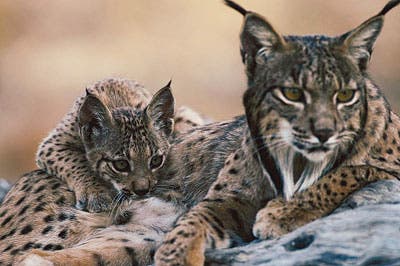
The Iberian lynx is the only wild cat listed as critically endangered by the International Union for Conservation of Nature (IUCN), numbering no more than 200 specimens, all of whom are entirely confined to southern Spain. Researchers from the Leibniz Institute for Zoo and Wildlife Research (IZW) in Berlin recently salvaged embryos and egg cells from a pair of captive Iberian lynxes before the animals were sterilized for their own safety. These life carrying eggs were then frozen and stored to this day in hopes that sometime they’ll be able to foster life once more in a surrogate parent.
Azahar, one of the two Iberian lynxes, recently underwent two emergency Caesarean sections in two consecutive pregnancies, so the researchers decided not to put her up for breeding anymore due to health hazards. Before Azahar was sterilized, though, the cat’s ovaries were removed by castration.
Now, castration might seem like an odd-ball idea considering it’s the opposite of conservation efforts, however right after surgery, the researchers managed to extract embryos and ovarian pieces from the feline through an adapted process the German institute had pioneered for domestic cats.
“Seven days after mating we expected to flush embryos from the uterus,” Katarina Jewgenow, a specialist from the Leibniz Institute for Zoo and Wildlife Research (IZW) in Berlin, said in a statement.
Saliega, the other female lynx also held in captivity, already gave birth to 16 cubs and at an age of twelve was too old to mate anymore. From Saliega, the researchers extracted a batch of unfertilized egg cells.
“The next step we are discussing right now is to implant these embryos into a foster mother, which might be an Eurasian lynx female,” said Jewgenow.
The closet related cat is the Eurasian lynx, which the researchers hope to use as a foster mother for the Iberian lynx eggs currently stored in liquid-nitrogen vats at Madrid’s Museo Nacional de Ciencias Naturales de Madrid.
The news comes only days after a highly publicized TEDx event in Washington D.C. called TEDxDeExtinction – a forum where ethical and practical questions related to reviving extinct animals were discussed and highlighted.
source
Was this helpful?



